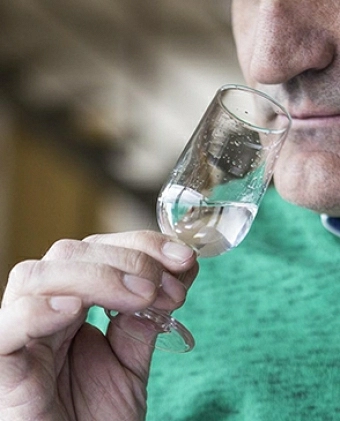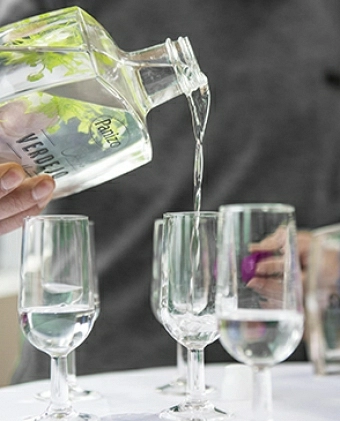Orujo Tasting
Tasting sessions of orujo (a pomace aguardiente or brandy, obtained from the distillation of the solid remains left after pressing of the grape) follow the same steps as wine tasting: see, smell and sip.
SEE, THE VISUAL PHASE
In this initial phase we take a look at the transparency and colour of the orujo, its tone, and its intensity. It is said that orujo is bright, crystalline and clean, as the “brandy” itself is colourless. The colour tone is brought by the distillery themselves, according to the type of liquor it wants to make. Fluidity is another element that can be valued at this stage, which depends not so much on glycerine but on the alcoholic strength of the orujo.
SMELL, THE OLFACTORY PHASE
In fact, the olfactory phrase of orujo is in itself two phases: nasal and retronasal. In the first, the aromas make their way into the olfactory system directly through the nose. The glass should not be too close to the nose as the concentration of ethyl alcohol can collapse olfactory sensors, and decrease our ability to examine the orujo. In the second phase, the odorous substances arrive when they taste the brandy.
The scents we can find are:
- Primary: from the grape variety
- Secondary: from the fermentation of sugars into alcohol by the action of the yeast
- Tertiary: formed during the length of time the brandy spends within wooden containers, in the case of barrel-aged brandies.
Considered defects, we can find hints of mould, solvent, smoke, wax and tallow. Among the quality sensations are the aromas of grass, apple, banana, strawberry, exotic fruits, hazelnut, hyacinth and rose.
Other aspects that are evaluated when assessing the aroma and taste are intensity, persistence, finesse and harmony.
SIP, THE TASTING PHASE
It is only after drinking an orujo that one begins to perceive sensations of heat, and the true flavours of the brandy. In general, this comes down to two tastes: sweet and bitter.
The sweetness is due to alcohol and in the aged fruit, as well as the sugars formed by the division of lignin (aromatic complexes derived from wood). Saltiness does not appear and the acidity is not perceived due to the strength of the alcohol, although the latter plays an important role in the balance of the brandy. The tasting of the brandy does not take place immediately with the first sip. The high alcoholic level dehydrates the mucosa of the tongue and dries the mouth. It is after that first blow, however, that you get to perceive the true flavours of the orujo.
From a taste point of view, the most valued quality component is its harmony: the brandy must burst into the mouth with a feeling of heat, yet end with a succession of pleasant sensations.



